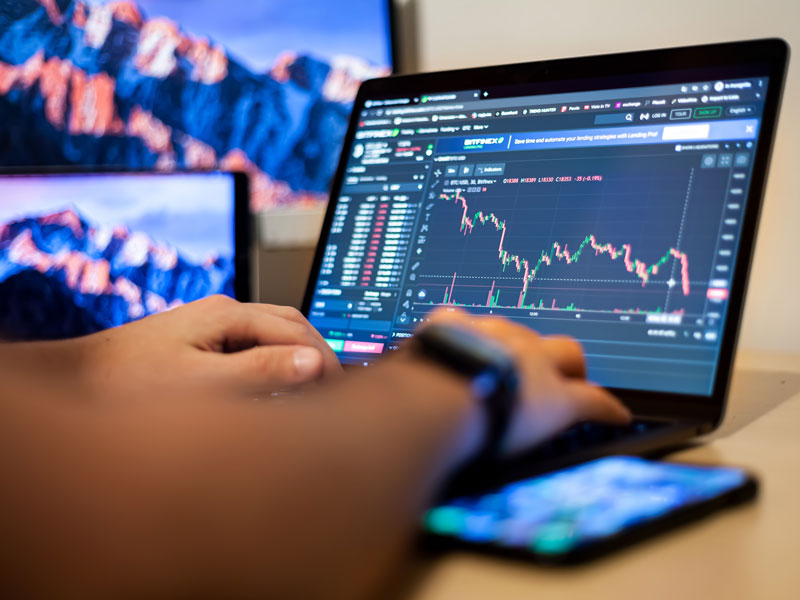
How to Open a Forex Trading Account: A Comprehensive Guide
Forex trading, also known as foreign exchange trading, is a lucrative opportunity for investors to gain exposure to the world’s financial markets. If you are looking to open a forex trading account, you have made a significant decision towards your financial future. This guide will walk you through the essential steps to successfully open your forex trading account, ensuring that you are well-prepared to start trading effectively. To begin your journey, check out how to open a forex trading account Top LATAM Forex Platforms that offer a range of services to enhance your trading experience.
Understanding Forex Trading
Before diving into the practical steps of opening a forex account, it is vital to understand what forex trading entails. The forex market is the largest financial market globally, where currencies are traded. Traders speculate on currency price movements to make profits, and it operates 24 hours a day, five days a week. Key benefits of forex trading include high liquidity, low transaction costs, and the ability to trade on margin.
Step 1: Research and Choose a Reliable Forex Broker
The first step in opening a forex account is selecting a reliable forex broker. This choice is crucial, as the broker will be your partner in trading. Here are a few factors to consider:
- Regulation: Ensure the broker is regulated by a reputable financial authority to guarantee the safety of your funds.
- Trading Platform: Look for user-friendly trading platforms that offer essential tools like charts, signals, and analytical resources.
- Spreads and Fees: Compare the spreads (the difference between buy and sell prices) and other trading fees to find the most cost-effective option.
- Customer Service: Choose a broker with reliable customer support to assist you whenever necessary.
Step 2: Complete the Application Process
Once you have chosen your forex broker, the next step is to complete the application process to open your trading account. Here’s what to expect:

- Account Type: Select the type of account that suits your trading style (e.g., standard, mini, or micro accounts).
- Personal Information: Fill in your personal details, including your name, address, date of birth, and contact information.
- Financial Information: Provide information about your financial situation, trading experience, and investment objectives.
- Identification Documents: Submit the required identity verification documents, such as a passport or national ID and proof of address (like a utility bill or bank statement).
Step 3: Fund Your Account
After your account is approved, the next step is to fund it. Most brokers offer various methods for depositing funds, including:
- Bank Transfers
- Credit/Debit Cards
- e-wallets (e.g., PayPal, Skrill, Neteller)
- Cryptocurrency Transfers
Choose the method that is most convenient for you, keeping in mind the processing times and fees associated with each option.
Step 4: Download and Set Up the Trading Platform
Once your account is funded, it’s time to download and set up your trading platform. Most brokers provide popular platforms like MetaTrader 4 or MetaTrader 5. Follow these steps to get started:
- Download the platform from your broker’s website.
- Install the software on your computer or mobile device.
- Log in using your trading account credentials.
- Familiarize yourself with the features and tools available in the trading platform.
Step 5: Practice with a Demo Account
Before risking your real money, it’s highly recommended to practice with a demo account. Most brokers offer this feature, allowing you to trade with virtual money. Reasons to use a demo account include:

- Understanding the trading platform’s functionality.
- Testing trading strategies without financial risk.
- Gaining confidence in your decision-making skills.
Use the demo account to explore different trading strategies and develop your understanding of market dynamics.
Step 6: Start Trading
Once you feel confident with your trading skills, it’s time to start live trading. Here are some tips for getting started:
- Develop a Trading Plan: Outline your trading goals, strategies, risk management techniques, and evaluation criteria.
- Start Small: Begin with a small investment, focusing on learning and gradually increasing your position as you gain experience.
- Stay Informed: Keep yourself updated with the latest market news and economic indicators that could impact currency movements.
Step 7: Manage Risks
Risk management is a critical aspect of successful trading. Consider implementing the following strategies:
- Set Stop-Loss Orders: Always use stop-loss orders to limit potential losses on your trades.
- Limit Leverage: Avoid using excessive leverage, as it can amplify your losses as well as gains.
- Diversify Your Portfolio: Diversifying your trades can help mitigate risks across different currency pairs.
Conclusion
Opening a forex trading account is just the beginning of your trading journey. By following these steps, you can set yourself up for success in the forex market. Remember to conduct thorough research, practice with a demo account, and implement effective risk management strategies. With patience and persistence, you can navigate the complexities of forex trading and potentially achieve your financial goals.

Recent Comments